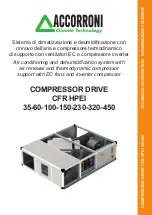
4
E
n
g
li
sh
SAvE tHESE InStruCtIon
DANGER: RISk Of ExplOSION OR fIRE
WHAt CAn HAPPen
HoW to PreVent It
• Spilled gasoline and it’s
vapors can become ignited
from cigarette sparks, electri-
cal arcing, exhaust gases
and hot engine components
such as the muffler.
• Shut off engine and allow it to
cool before adding fuel to the
tank.
• Use care in filling tank to avoid
spilling fuel. Move unit away
from fueling area before start-
ing engine.
• Heat will expand fuel in the
tank which could result in
spillage and possible fire
explosion.
• Keep maximum fuel level
1/" (1.7 mm) below
bottom of filler neck
to allow for expansion.
• Combustible materials
which come into contact
with hot engine parts can
become ignited.
• Add fuel outdoors in a well
ventilated area. Make sure
there are no sources of igni-
tion, such as cigarettes near
refueling location.
• Operate compressor in
a clean, dry, well venti-
lated area a minimum of 48"
(1. meters) from any build-
ing, object or wall. Do not
operate unit indoors or in any
confined area.
• Operate compressor in an
open area away from dry
brush, weeds or other com-
bustible materials.
• Improperly stored fuel could
lead to accidental ignition.
Fuel improperly secured
could get into the hands of
children or other unqualified
persons.
• Store fuel in an OSHA-
approved container, in a
secure location away from
work area.
• unattended operation of
this product could result in
personal injury or property
damage. to reduce the
risk of fire, do not allow
the compressor to operate
unattended.
• Always remain in attendance
with the product when it is
operating.





































